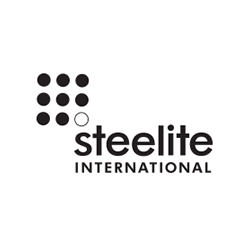This week:
- Oregon governor announces proposal for a $40 million state grant to prevent Portland’s Terminal 6 from closing in October
- US Senate retroactively confirms the terms of two of the FMC’s longest-serving members
- New York City trades its Staten Island container terminal for the Port Authority of New York and New Jersey’s Red Hook Container Terminal in Brooklyn
- Contract intermodal shipping maintains trend of 25-28% savings over contract trucking
- Vessel space allocated to NVOs on the trans-pacific is being slashed as carriers chase rising spot market prices
Portland Container Terminal to Receive $40 Million in State Funds to Prevent Closure
In April, officials at the Port of Portland announced that its container services would end by October due to increasing annual losses and difficulties finding a third-party operator. Terminal 6, Portland’s container terminal, serves as a crucial gateway for U.S. producers in Oregon to access international markets.
Since receiving news of the impending closure, the governor of Oregon announced on May 16 that $40 million in state funds have been proposed to aid the port’s continued operation. A 43% drop in container traffic between July 2023 to February 2024 pushed Terminal 6 into increasing losses. After $13.2 million in losses for 2023, this year’s forecasted loss is $13.7 million.
In return, Governor Tina Kotek has asked the port to provide a progress report by August 23, detailing business plans for reducing losses and improving container volumes through the port.
Subscribe to JMR’s Weekly Supply Chain Roundup!
Stay informed with the latest supply chain news, trends, and insights. Get it delivered directly to your inbox every week.
Current Terms of Longest-Serving FMC Members Retroactively Confirmed by Senate
After a recommendation from the Committee on Commerce, Science, and Transportation, the US Senate confirmed the current terms of the Federal Maritime Commission’s (FMC) Chairman Daniel Maffei and Commissioner Rebecca Dye.
The retroactive confirmation via voice vote occurred on May 14 for Maffei’s 2022-2027 term and Dye’s 2020-2025 term. Both FMC members have played key parts in boosting the regulatory body’s oversight of the container shipping industry after the supply chain surges of the pandemic.
Dye in particular pushed for probes into detention and demurrage (D&D) billing from carriers. These probes, starting in 2018, led to the FMC developing its “interpretive rule,” stipulating that fees should only be used to encourage swift container movement instead of for generating profit.
The information and complaints collected by the FMC in its investigations of D&D billing and other problematic shipping practices were utilized in the drafting of the Ocean Shipping Reform Act 2022 (OSRA-22). Maffei was first nominated for and accepted into the FMC in 2016, being promoted to Chairman in 2021, while Dye was first appointed to the FMC in 2002.
NYC and NY-NJ to Trade Terminals to Further Developments at Both Sites
The Port Authority of New York and New Jersey (PANYNJ) will trade its Brooklyn Red Hook Container Terminal and a neighboring cruise terminal with New York City (NYC) for control of Staten Island’s container terminal.
The Brooklyn waterfront property totals 122 acres and will be taken over by NYC’s economic development agency. In return, PANYNJ will receive 225 acres at Staten Island’s Howland Hook Terminal and full control of the facility. The terminal is currently leased by CMA CGM which plans on investing up to $200 million into the terminal to improve the port’s lift capacity by 50% to 1.5 million TEU over the coming seven years.
The Red Hook Container Terminal is primarily used by niche refrigerated container carriers. CMA CGM’s north-south service normally called into Red Hook until the trade, with the service now hosted by Howland Hook.
NYC has already announced large-scale plans to improve terminal operations at Red Hook with $80 million earmarked for strengthening the terminal’s piers, $15 million for an electric container crane, with an additional $15 million from New York State to build a new cold storage facility.
Domestic Intermodal Shipping Holds on to 26% Savings over Trucking
In Q1 2024, US intermodal shipping maintained its 25% to 28% savings over trucking, a trend that has persisted since January 2023 according to the Journal of Commerce’s Intermodal Savings Index (ISI).
The savings spread reported for Q1 shows that contract intermodal savings increased one-tenth of a percentage point year-over-year compared with contract trucking, but were down one percentage point from Q4 2023. From December to March, contract trucking rates fell from $2.04/mile to $2.01/mile, while contract intermodal rates fell from $1.54/mile to $1.52/mile. Both are predicted to fall an additional one-hundredth of a percentage point in April.
On the spot market, the average domestic intermodal shipper saved 17.2% over trucking in Q1 of this year, up two percentage points year-over-year but down two-hundredths of a percentage point since Q4 2023. Average spot trucking rates from December to March fell from $2.08/mile to $1.97/mile, and while spot intermodal rates stayed the same across this period at $1.72/mile, early data for April indicates a drop to $1.63/mile.
Intermodal provider Hub Group stated in its April earnings call that contract rates will likely maintain a flattish trend through the end of the year.
Trans-Pacific Carriers Cut NVO Allocations, Preferring the Rising Spot Market
Ocean carriers on the trans-Pacific lane have begun cutting back on space allocated to non-vessel-operating common carriers (NVOs) after ocean spot rates increased by more than 50% since the first week of April.
Forwarder fixed rate bookings are also expected to largely disappear in the face of the recent spot market boom. On May 15, trans-Pacific carriers implemented a general rate increase (GRI) up to $1,000/FEU, taking average spot rates from Asia to the US West Coast up to $5,000/FEU. On April 5 this year, the average price was $2,680/FEU.
Photo by Fabius Leibrock on Unsplash









